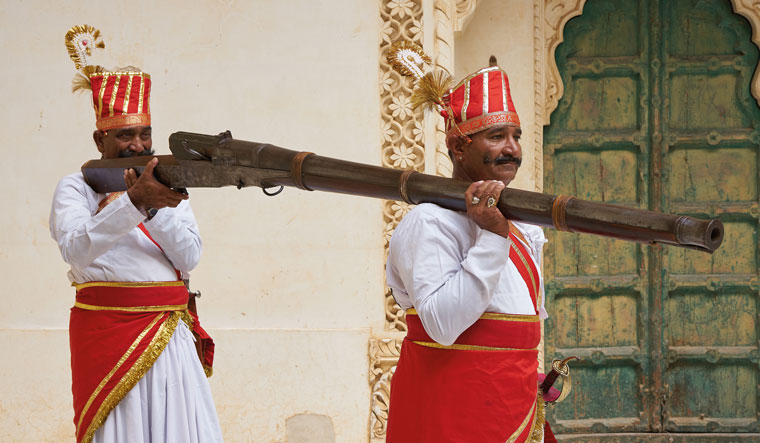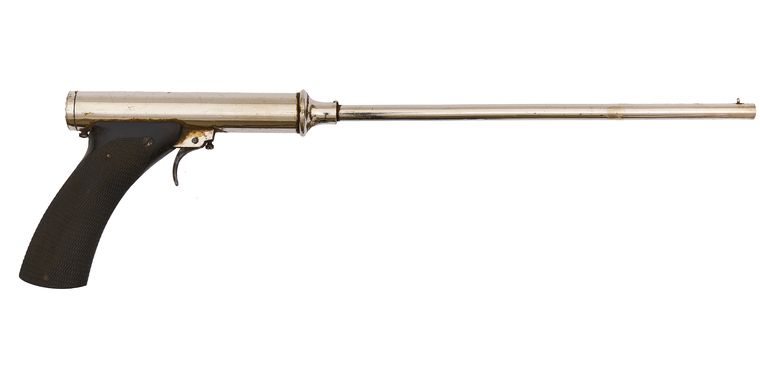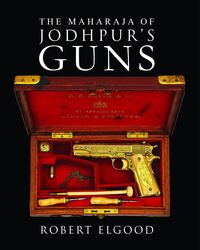Aristocratic Rajputs hardly ever wielded guns in Jodhpur paintings, not until the second half of the eighteenth century. An officer with the British East India Company, James Tod, wrote in the nineteenth century: “The Rajputs who still curse those vile guns which render of comparative[ly] little value the lance of many a gallant soldier, and he still prefers falling with dignity from his steed to descending to an equality with his mercenary antagonists.”
Robert Elgood, an expert on historic arms, has referenced this quote and elaborated on Rajput’s disdain for gunpowder weapons vis-à-vis the Mughals in the sumptuously produced The Maharaja of Jodhpur’s Guns commissioned by the Mehrangarh Museum Trust—perhaps only to further accentuate the stunning range of Indian matchlocks, sporting guns, shotguns, revolvers and automatic pistols that reside in the Jodhpur collection. This book offers a richly illustrated account of historic Indian arms with its splendid interspersing of 350 crystalline images of guns and Rajput paintings sourced from private collections by Elgood.
The section 45(c) of the Arms Act, 1959, allows ownership of weapons of “an obsolete pattern or of antiquarian value or in disrepair”. Elgood takes care to mention at the very outset how during Indira Gandhi’s prime ministership, guns in the Jodhpur armoury were perforated with holes in their breeches to make them defunct. What follows is a fascinating account of gilded weapons in war and peace.
There is the “big and long” lamchar which is the Jodhpur name for a 10-foot-long matchlock, usually carried by two men. Mounted on stands when used, they are seen in Akbar’s siege of Ranthambore, painted in 1569 in the Akbarnama. The stands were first created in Europe, the author informs. One was even designed by Leonardo da Vinci. Elgood talks about the hefty Mughal bullets used in these guns, and how once it caused the death of 32-year-old prince Daniyal Mirza, the third son of Akbar. On a hunting expedition, the alcoholic prince had asked his friends to conceal liquor in a gun barrel; the residual lead left in the barrel might have caused death by lead poisoning.
The Mehrangarh armoury has an excellent collection of patterned “Sindhi Jezails”; they have the best Damascus barrels, often with the owner’s name etched in gold. The staggering collection cannot be complete without the mention of the British gunmaker R.B. Rodda & Co. Next to the image of a cased Colt self-loading and gold-plated pistol, Elgood recounts how the company was famously robbed of 50 Mauser pistols and 46,000 rounds of ammunition by the Jugantar faction of a Bengali revolutionary outfit called Anushilan Samiti.
While the details can often get bulky and overwhelming, much like the guns on display, the book is an enviable collectable for readers keen to appreciate the magic and the menace of firearms.
The Maharaja of Jodhpur’s Guns
By Robert Elgood
Published by Niyogi Books
Price Rs4,500; pages 368




